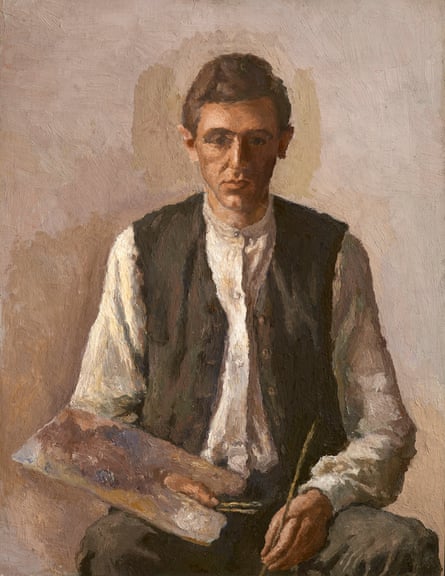He could be a peasant or a manual worker, in his collarless shirt and brown waistcoat, looking at you frankly. But the brush and palette in his hands confirm Giorgio Morandi’s true profession in the deeply likable Self-Portrait he painted in 1925 when he was in his mid-30s.
It’s so approachable, yet Morandi is one of the most mysterious artists of the 20th century. His is the only human figure in the Estorick Collection’s beautifully direct encounter with his metaphysical art. Everything else is a silent reckoning with objects and places. There are poplar trees and rivers sketched in his trips to the countryside but mostly there are paintings, etchings and drawings of the bottles, pots and other domestic stuff he endlessly rearranged in his studio at the family home in Bologna, where he lived all his life with his sisters while teaching drawing in schools.

Morandi made the still life a 20th-century art form, taking this ancient, humble genre that was already old when artists painted fruits on the walls of Pompeii’s villas and infusing it with a peculiarly modern solitude. He was not, of course, the first modernist to see how a bowl of fruit could question existence. His 1927 painting Still Life with Fruits is a homage to Cézanne, whose apples toppled traditional perspective painting before Morandi was born.
Yet the two painters have almost nothing in common. Morandi doesn’t take perception apart like Cézanne and his cubist followers. Instead, he broods on the simultaneous banality and poetry of the shapes of things: a ceramic lemon squeezer with a lemon-yellow top, a blue and white bowl, a white porcelain bottle with a long, slender neck. These are among the kitchen objects arranged in a grey featureless space in his great 1936 canvas Still Life.
What does their arrangement mean? Perhaps nothing. The traditional still life often contains a strongly underlined signification: a skull is a memento mori; a red lobster next to a glass of wine is a condemnation of luxury. But Morandi’s pottery has been assembled apparently at random, just for the sake of painting it.
You imagine him on a quiet morning taking these items out of the kitchen cupboard and positioning them. Time stops as he copies the long shadows of the lemon squeezer, bottle and cup. There’s no missing the fact that for Morandi – and for us when we look through his eyes – there is a spiritual enigma to this still life. These solid objects appear to shimmer. They are lifeless forms yet they tremble with ghostly consciousness.
Morandi’s leading critical champion was the art historian Roberto Longhi, who rediscovered Caravaggio and Piero della Francesca and taught the film-maker Pier Paolo Pasolini. He claimed Morandi made pilgrimages to see Piero’s frescoes in Arezzo, which is suggestive. For if Morandi is modern he is also very old. He studies the physical world with the same quiet passion as this early Renaissance artist.

Yet Morandi lived much of his life in Mussolini’s Italy. While he painted his peaceful pots, violence rampaged beyond the calm courtyard he could see from his window on Via Fondazza, Bologna, of which there’s a haunting painting here. Was Morandi really able to ignore all that? No. He was arrested and imprisoned in 1943 for his affiliations with centre-left resistance leaders.
Far from escaping their time, his paintings acknowledge its monstrous shadows. Still Life with Musical Instruments, from 1941, truly is a memento mori: the curved body of a lute looks organic and human, crushed under a guitar and trumpet as if they were a heap of corpses. In a 1942 painting the pots are crushed together in a tight, terrified crowd. Another 1942 canvas features four tall bottles in a row, like baleful chimneys. The spiritual vision has become an intimation of hell.

Morandi’s art, however, is an act of survival and hope: “Pessimism of the intellect, optimism of the will”, to quote Antonio Gramsci, who died in a fascist prison. Morandi’s fidelity to the real world made sense to a growing audience after 1945. By then, the fascist-sympathising glamour of futurism was abhorrent. Now Longhi’s vision, of a tradition of painting life in Italian art, influenced neorealist cinema.
Morandi shares this movement’s raw poetry in his 1953 Natura Morta. Three long-necked white vessels stand in front of three rectangular objects, as blunt as gravestones. These are apparently bricks, but you can also see them as tombs. Are the bottles dead souls? Morandi almost never paints people, but his art aches with humanity and love.
Giorgio Morandi: Masterpieces from the Magnani-Rocca Foundation is at the Estorick Collection, London, until 28 May.

Comments (…)
Sign in or create your Guardian account to join the discussion